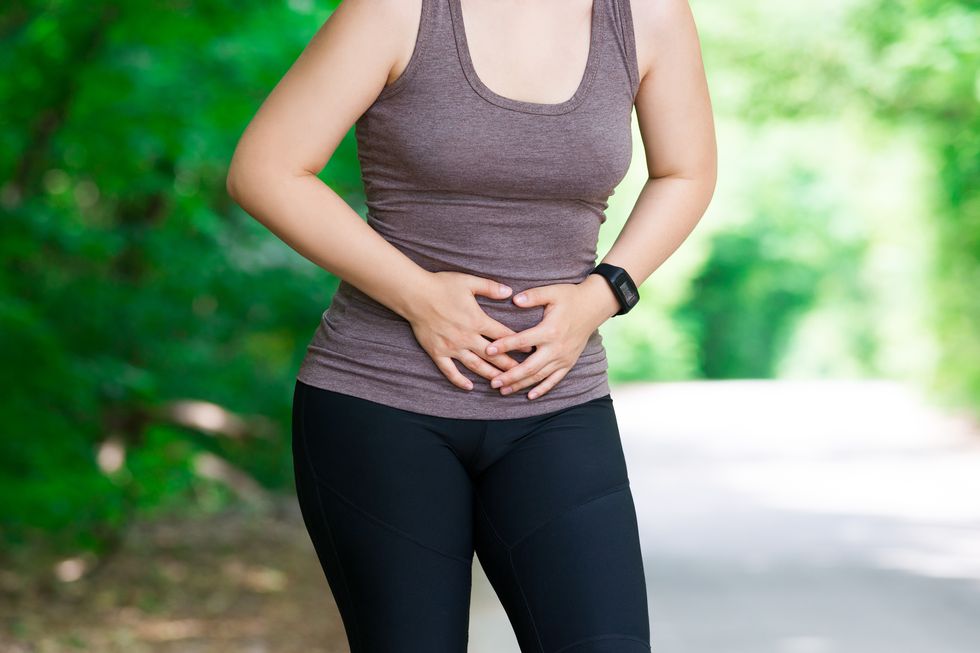This article has been archived. The information contained in it may no longer be accurate, and we will no longer be updating it. For our most up-to-date information, please visit our endometriosis information here.
There's no denying that endometriosis (sometimes referred to as "endo") can be painful. It can also be confusing, concerning and more common than many people think.
Endometriosis is most often diagnosed in women in their 30s and 40s although it can happen to anyone who is menstruating. One in ten women of reproductive age in the United States have the chronic condition.
Maybe you know someone who suffers from endometriosis, or you have it yourself. If so, you might be searching for additional information on what causes it or even risk factors for this common condition.
Endometriosis occurs when tissue similar to the lining of the uterus grows outside of it, where it doesn’t belong. This displaced tissue, fueled by estrogen, travels and attaches itself to other areas of the body, most often the ovaries, fallopian tubes and outer surfaces of the uterus. The tissue can also grow onto the vagina, cervix, bowel, bladder, rectum or vulva. In very rare cases, the tissue travels to the lungs, brain or skin.
What causes endometriosis? Although there are no definite causes, the most common theory is that your menstrual flow—rather than exiting your uterus, passing through a small opening in your cervix and exiting your body through your vagina—gets caught up in other areas of the body and flows back into your pelvic cavity. Known as "retrograde menstruation," this tissue then attaches to other areas of the body. Although the tissue resulting from endometriosis is benign and not cancerous, its growth can be problematic, and can cause cysts to form in your ovaries or can form adhesions or scar tissue, which may bind your organs together.
Endometriosis is painful because tissue is essentially trapped. Rather than being shed with each period, it remains in your body with no means of escaping, reacting the same way it does when it's present in your uterus, and it can continue to grow and bleed, but with nowhere to go. Watch this video and learn what makes endometriosis so painful.
Other theories include genetics; a problem with the body's hormonal system (since estrogen fosters the growth of the tissue); a faulty immune system that fails to recognize the tissue growing outside the uterus; or prior abdominal surgery (like a cesarean section, which could have mistakenly displaced endometrial tissue).
Because of the pelvic pain women experience with endometriosis, it's sometimes misdiagnosed as other conditions like pelvic inflammatory disease or ovarian cysts. It may even be mistaken for irritable bowel syndrome, since both conditions can cause diarrhea, constipation and bouts of abdominal cramping.
Are you at risk? You might be, if…
- You've never given birth
- Prolonged exposure to estrogen. For example, you started menstruating at an early age or you have late menopause.
- You have short menstrual cycles (less than every 27 days).
- Your body mass index is low.
- You have one or more first-degree relatives with the condition (like a mother, sister or aunt).
Endometriosis symptoms may include:
- Painful menstrual cramping. This often-debilitating pain is typically much worse than your "usual" period pain and usually increases over time.
- Non-menstrual pelvic pain (NMPP), or pain that begins before your period does and lasts beyond when your period ends.
- Painful intercourse.
- Chronic lower back, pelvic and abdominal pain.
- Painful bowel movements or pain with urination.
- Excessive bleeding during your period or spotting between periods.
- Constipation, diarrhea, abdominal cramping (especially during your period).
- Fatigue.
- Bloating or nausea.
If you're experiencing any of these symptoms, you don't have to suffer. Don't hesitate to take action (like taking this symptoms quiz) and schedule a discussion with your healthcare professional (HCP). Because of a general lack of awareness and the tendency to accept the symptoms as "normal," it can take up to six to 10 years to receive a proper diagnosis.
If you take early action, you can get help and may cut down on that long wait period.
This post was created with the support of AbbVie. For more information, visit SpeakENDO.com
Sources:
https://www.endofound.org/https://emedicine.medscape.com/article/271899-overview#a3
https://www.womenshealth.gov/a-z-topics/endometriosis
https://www.acog.org/Patients/FAQs/Endometriosis#what
https://www.mayoclinic.org/diseases-conditions/endometriosis/symptoms-causes/syc-20354656https://endometriosis.org/resources/articles/facts-about-endometriosis/
https://www.sciencedirect.com/science/article/pii/S1110569014200562







